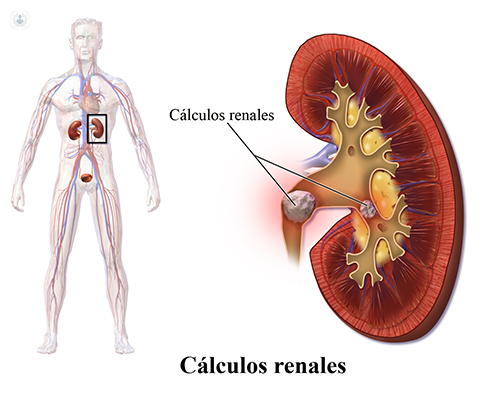lithotripsy, the best treatment in child nephrolithiasis
Written by:The extracorporeal shock wave lithotripsy has been constituted as the best treatment in childhood renal lithiasis, according to a study that we have carried out specialists in Urology .
What are kidney stones and what symptoms do they produce?
Kidney stones or renal stones are a pathology caused by the presence of solid elements of different size and appearance that form inside the kidneys or urinary tract, due to the presence of salts in the body's fluid.
They can be of different size, from the measure of a grain of sand to a stone of considerable proportions. Sometimes kidney stones can be expelled from the body without medical intervention, but there may also be cases where they remain in the kidney and even travel through the urinary tract, becoming stuck and blocking the urinary tract. This causes in the patient great pain, fever, hematuria, etc., for which intervention is necessary.

Who gets kidney stones
It is a pathology that usually affects adults. However, recent studies have shown an increase in cases in children, mainly due to dietary factors and an increase in childhood obesity in school age, between 6 and 12 years.
Treatment of extracorporeal shock wave lithotripsy in children
Following the recent research mentioned above, and with years of accumulated experience, it is possible to state that the ESWL fragmentation technique in children (shock wave extracorporeal lithotripsy) is the first choice in the treatment of renal and proximal ureter medium. During the study, in fact, it was applied in 178 patients. Calculations of 2 to 3 centimeters were likely to be successfully treated without complementary maneuvers or adjuvant treatment. The exception was cystine lithiasis , which is a less frequent type of kidney disease), which offered more problems of fragmentation.
Ureteroscopy is the therapeutic option chosen in lithiasis of low ureter and, in some cases, of mid and proximal ureter. The rigid ureteroscope allows therapeutic alternatives to the ESWL, with high resolution and maneuverability. Flexible URS (Ureterorenoscopy) is a technique less used because of the very good results with ESWL and rigid URS.
Alternative treatment for extracorporeal lithotripsy in extreme cases
Percutaneous nephrolithotomy (NLP) remains a therapeutic alternative for exceptional cases of complex or ESWL resistant lithiasis.



